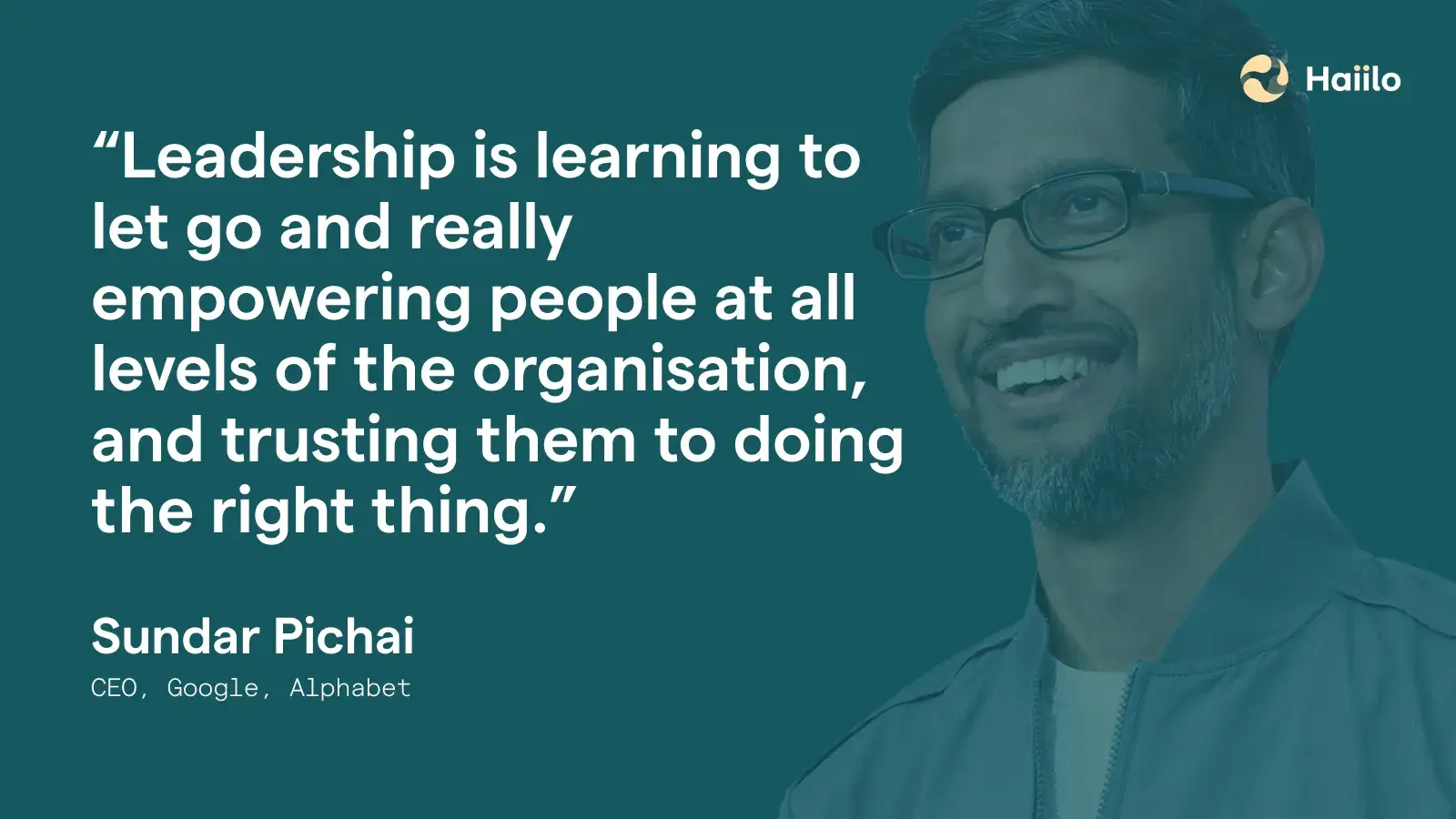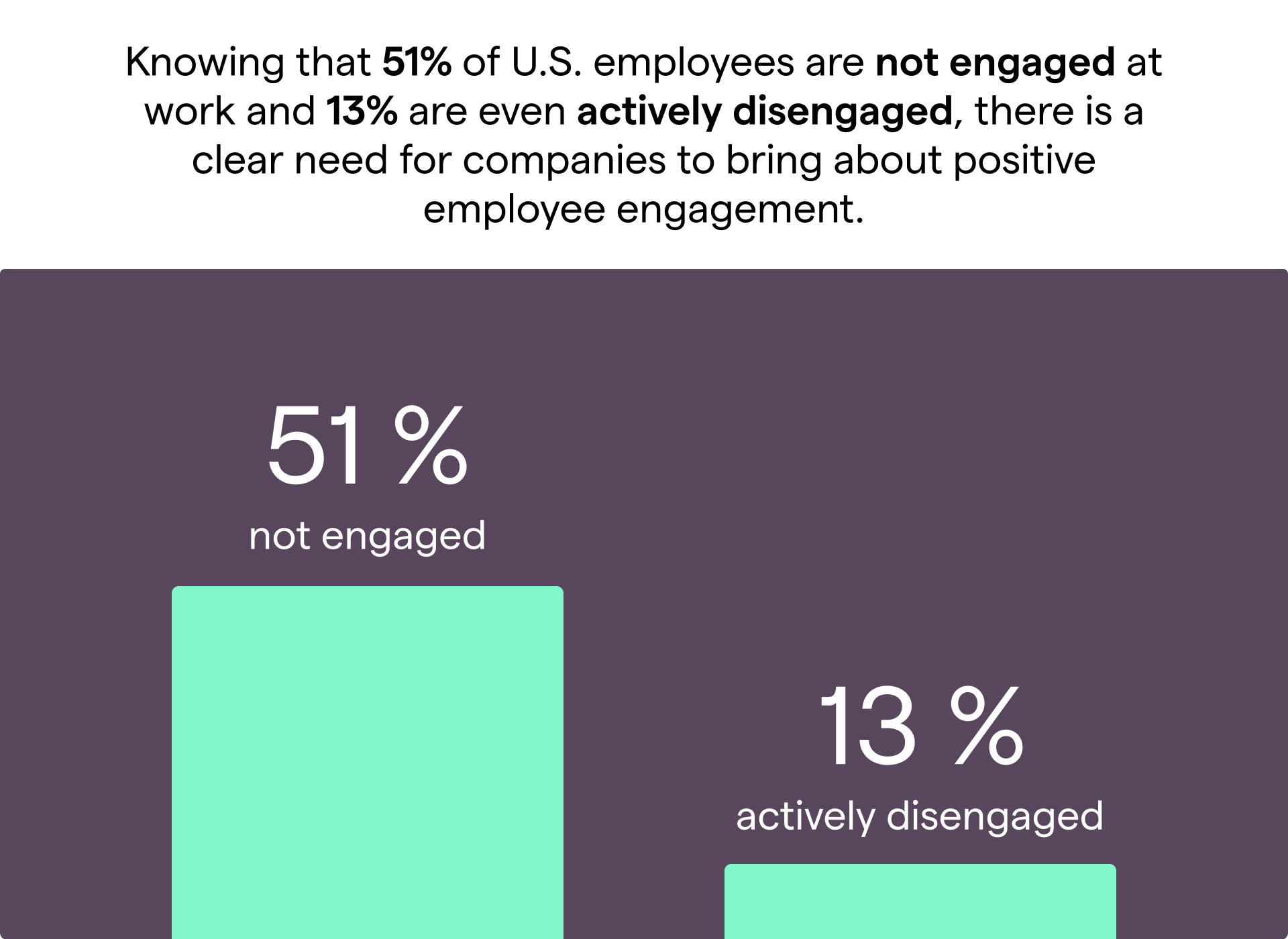Your leadership style plays a crucial role in driving employee engagement, boosting employee morale, and ensuring the overall positive employee experience in the workplace.
Moreover, research shows that leaders and managers are accountable for 70% of the variance in employee engagement.

In this blog, we will talk about what leadership style really is and what are the best and worse leadership styles for managing people.
💡 Before we move forward, check out these secrets for being a successful leader!
What Is a Leadership Style?
There are many definitions of what leadership style really is. Moreover, many leaders practice a combination of different leadership styles based on their personal characteristics, workplace situations, and the environments in which they operate, which makes defining leadership style even harder.
At the end of the day, we can say that leadership style is determined by the way in which a leader manages and communicates with his or her followers. The most important characteristic of a successful leader is the ability to influence people, direct them, motivate, and manage them.
Elevate your leadership style by using a proper internal comms platform
For leaders, it is of utmost importance to be aware of their own leadership style. Self-awareness is what helps them understand the reason behind their successes and failures and make better decisions for improvement.
Leadership is also about the ability to adjust to new work situations. As many companies have been undergoing constant change since the start of the pandemic, 56% of employees believe that leaders should update their skills to support remote teams.
It is important for organizations to remember that people can acquire new leadership skills with training. However, even though 77% of companies are experiencing a leadership gap, 58% of managers say that they have never received any management training.
Let’s now take a look at the 3 most and least effective leadership styles.

Top 3 Most Effective Leadership Styles
Almost every leadership style has its benefits and downsides. But here are the top 3 leadership styles recognized as most effective ones when managing employees within an organization.
1. Democratic leadership
During the past decade, many organizations have been witnessing low employee engagement levels. One of the biggest reasons for low employee engagement is poor leadership and the feeling of not being heard.
According to research, roughly half of employees aren’t regularly speaking their minds at work. Only 52% of employees say that they always or almost always speak their minds when having work-related conversations with their leaders.

Democratic leaders are the ones who understand the importance of asking employees for input, and they always consider their people’s opinions and concerns before making the final decision. Democratic leaders encourage continuous bottom-up feedback. This is why they are able to drive higher employee engagement and satisfaction levels in the workplace.
This style is most suitable for organizations that value creativity and innovation.
💡 Keep reading about the 18 leadership communication trends.
2. Coach-style leadership
Coaching leadership style is one of the most efficient leadership styles today, but unfortunately also one of the most underused styles.
The biggest trait of such a leader is the ability to quickly recognize their team members’ strengths, weaknesses, and motivations to help each individual improve. They know how to create and nurture a motivating working environment for individuals and teams.
Coaching leadership style is particularly valuable today when there is a big shortage of talent and when many employers are trying to educate their people internally. Bringing the best out of employees and better leveraging their existing skills and expertise can be a big competitive advantage for organizations.
By building better individuals, these leaders are, in the long run, focusing on creating more successful teams that know how to communicate and collaborate with each other.
3. Servant leadership
Servant leaders live by a people-first mindset. Before anything else, these leaders care about their employees’ well-being and general satisfaction. When this is achieved, their employees’ productivity also increases.
Servant leaders have great communication and interpersonal skills, and these leadership skills are highly valued by employees. Still, 71% of employees believe that their leaders do not spend enough time communicating goals and plans.
Today, when many employees are experiencing severe burnout and social isolation challenges when working fully remote, servant leaders can be of help. Their main priority is to focus on employee wellbeing before anything else.
However, this leadership style should stay within its limits as there are some negative sides to it. Because servant leaders put the needs of their team above their own, they can often experience burnout. Furthermore, they may have a hard time being authoritative when they need to be.
📚 Looking for more great leadership styles, check out why transformational leadership is crucial for company success!
3 Least Effective Leadership Styles
Some leadership styles are just not the right fit for most situations we face at work. Let’s take a look at the 3 leadership styles you should avoid most of the time as they don’t focus on empowering people in an organization.

📚 Also learn about the difference between leadership and management.
1. Bureaucratic leadership
Even though this leadership style may be beneficial for some work environments and highly regulated industries, today it’s mostly avoided as it doesn’t stimulate employee satisfaction, engagement, and productivity.
Bureaucratic leaders are the ones who expect their people to strictly follow given processes and procedures. Creativity and innovation are not encouraged nor celebrated, and bottom-up feedback is often neglected.
Such leadership style is one of the most common reasons for poor employee experience in the workplace. It tends to result in poor employee-manager relationships and high employee turnover rates.
🔎Read on: 8 Employee Engagement Statistics You Need to Know in 2020 [INFOGRAPHIC]
2. Autocratic leadership
Autocratic and bureaucratic leadership styles have many similarities. These leaders are only focused on results and efficiency and they rarely take input from their employees. They make decisions without considering their people’s thoughts, opinions, and concerns.
Even though autocratic leaders usually have very good self-discipline, they struggle to build good relationships with their team members, resulting in low trust and poor employee engagement.
Autocratic leaders are the ones with ultimate authority and power over others.

📚 Also read about the importance of building trust in the workplace.
3. Transactional leadership
When combined with one of the top 3 leadership styles, transaction leadership can actually be very successful. However, if for example, a dominant trait is micromanagement, this can have a very negative impact on employee experience and engagement at work.
Managers with this leadership style tend to establish predetermined incentives—usually in the form of monetary reward for success and disciplinary action for failure.
They are not agile, and they are likely to command military operations, manage large corporations, or lead projects that require rules and regulations to complete objectives with tight deadlines.
📚 Leadership plays a crucial role in shaping workplace culture. Get our guide for building a positive workplace culture in your organization!
Determining and Addressing Your Leadership Style
The very first step towards becoming a better leader is self-awareness. If you don’t understand what your leadership style is, it’s hard to change it and become a better leader for your people.
Also, if you don’t understand what drives and shapes positive employee experience in the workplace, you can’t really begin to improve it.
This is why many employers today have programs for helping and enabling their managers to become better leaders. One of the best ways for doing that is by providing the right set of technology for collecting valuable employee feedback through regular surveys.
Employee surveys are the most powerful and the most efficient way for encouraging employees’ share of voice and understanding the drivers that shape positive employee experience in the workplace.
By asking questions such as: “Do you feel appreciated for your work?”, “Do you feel empowered to make your own decisions?”, “Do you feel like you have been growing in your career?”, or “Do you feel like you have clear goals?”, it’s easy to extract dominant leadership styles among managers.










